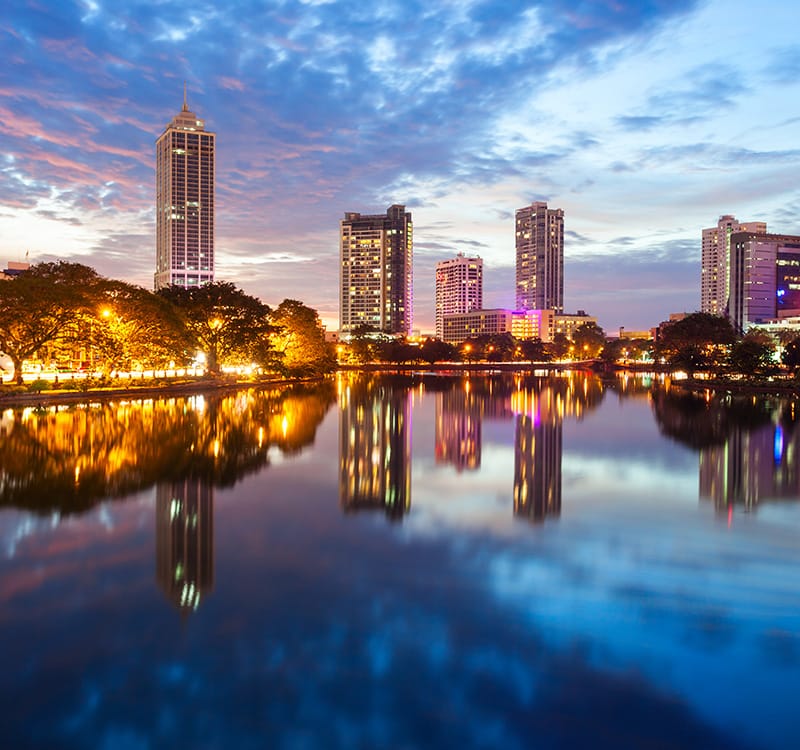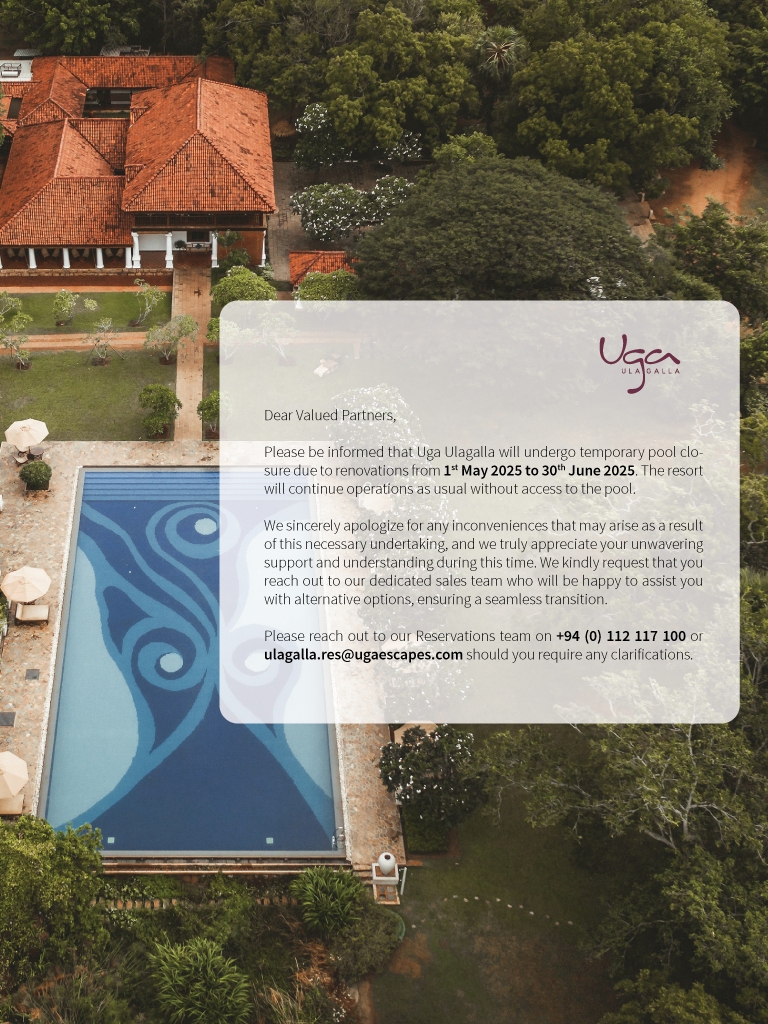Colombo
Colombo Travel Guide: Top Attractions and Travel Tips
Sri Lanka’s largest city is a riot of old and new, colour and contrast. Cosmopolitan, vibrant and a melting pot of Sinhalese, Tamil and Muslim cultures, Colombo is divided into 15 distinct neighbourhoods. Explore them on foot or by tuk tuk, spending your days diving into bustling markets, discovering art galleries, boutiques and tiny coffee shops, and relaxing in the city’s many green spaces. Over the last few years, new high-rises home to malls, hotels and apartments have grown exponentially (as is the new and emerging 575-acre Colombo Port City development), yet the profusion of crumbly, decadent and nostalgic colonial-era buildings remain stoic reminders of the city’s illustrious past. It is this mesmerising diversity that makes Colombo such an enjoyable city to explore.
History of Colombo
Colombo’s story began in the 5th century when it served as a sea port for traders between Asia and the west. Some of these tradesmen – Indian, Arab, Chinese and Malay – settled in Sri Lanka, fostering the city’s multi-ethnic population. By the 1500s, the west’s discovery of Sri Lanka resulted in periods of rule by Portuguese, Dutch and British colonisers, all of whom left their indelible mark on the city. The British ruled from 1815 to 1948 and were the first European power to make Colombo their capital. Although Colombo remains Sri Lanka’s largest and most prominent city, it is at Sri Jayewardenepura-Kotte – a suburb of Colombo – where Sri Lanka’s parliament lies. Seemingly ‘floating’ on water, the inspirational building was designed by the late architect Geoffrey Bawa and completed in 1982.
Things to do in Colombo
Attractions in Colombo tend to focus on history, culture and architecture. The mix of modern buildings and architecturally-inspiring colonial constructions dating back to the Portuguese, Dutch and British eras can be admired throughout the city, but particularly in Fort. We recommend putting on a good pair of walking shoes or sturdy sandals and exploring pockets of the city on foot – great places for doing this are Fort, the Pettah, Park Street and Beira Lake, the Galle Face Green and gentile Colombo 7.
•The National Museum: Dating back to 1876, and commissioned by the then British governor of Sri Lanka, this white, colonial building is a beauty in itself. It is the largest museum in Sri Lanka, and home to displays of statues, artwork, carvings, swords and masks, as well as the throne and crown of the last king of Kandy.
•Independence Memorial Hall: Sri Lanka gained its independence from Britain on 4th February 1948, and this striking monument marks the occasion. Its design takes inspiration from the Royal Audience Hall in Kandy, and to the front stands a statue of Sri Lanka’s first president, the Hon Don Stephen Senanayake. The hall sits in beautiful parkland, and is walking distance of shops and restaurants in Colombo 7.
•Fort’s colonial buildings: Fort is probably the closest you’ll get to a central point in Colombo. Originally bounded on two sides by the sea, and two sides by a moat, this historic precinct is home to some truly beautiful colonial-era buildings – some beautifully restored, and others that have seen better days. Some of the highlights include the Old Dutch Hospital, the Clock Tower, the Old Post Office, Central Point, Lloyd’s Building and the famous red and white Cargill’s building.
•Pettah’s vibrant markets: If you can handle large crowds, we recommend a visit to Pettah – a buzzy market district. Different roads tout different items, and although you’re unlikely to find much to buy here (it’s more of a wholesale market), it’s all about the experience of exploring the bustling streets, witnessing the frenetic activity, absorbing the predominantly Tamil and Muslim culture, and diving in and out of historic buildings such as the Jami ul-Aftar Mosque and the fascinating Dutch Period Museum.
•Gangaramaya Temple and Seema Malaka Shrine: Gangaramaya is one of Colombo’s most important Buddhist shrines, filled with an eclectic variety of items gifted to the temple over the years alongside a vast number of Buddha statues. Just across the road, and rising above Beira Lake is the Geoffrey Bawa-designed Seema Malaka Shrine. Ringed by Buddha statues, it was designed to be used for the inaugurations of monks.
•Geoffrey Bawa’s former home: Prominent architect Geoffrey Bawa’s former home, Number 11, is one of Colombo’s hidden treasures. Between 1959 and 1968 Bawa gradually acquired four bungalows and combined them to create the enigmatic one-of-a-kind townhouse that stands today. Rooms – still displaying Bawa’s possessions as he left them – are linked artistically by corridors, passageways, lightwells and verandas.
•Galle Face Green: Colombo residents congregate at the Galle Face Green, the capital’s prominent seafront promenade, in the evenings and at weekends. It was the British that carved out this ocean-facing green as a place of leisure, and today you’ll find food vendors, drinks sellers, kite flyers and a general air of joviality.
•Shopping: Colombo has some superb shops – you just need to know where to look. You can now find beautifully made clothing by local designers alongside the bigger malls. Colourful handloom fabric products, such as tablecloths, cushions and toys, are something else to look out for. Many shops sell tea, textiles and handicrafts, and there are an increasing amount of lifestyle stores with beautiful home décor items.
•Art galleries: Once again, Sri Lanka has some excellent art galleries but they aren’t immediately obvious. There are a number of private galleries showcasing contemporary work by local artists as well as the Sapumal Foundation and the National Art Gallery for more historic art. The Museum of Modern and Contemporary Art Sri Lanka is new.
Dining in Colombo
Colombo’s dining scene is increasingly cosmopolitan. Whether you’re looking for traditional Sri Lankan food or simple street foods, afternoon tea or a coffee, or for a fine dining international menu, there is something to suit everyone’s tastebuds. Colombo’s staple dish is kothu roti (a mix of roti, vegetables and meat) prepared on a hot plate with a distinctive ‘cop chop’ sound. A Colombo street food experience is something not to be missed. Other international cuisines to be found include Thai, Indian, Chinese, Italian and Japanese.
One of the best restaurants in Colombo is Rare at Residence. Innovative and inventive, it has carved out a name for itself as offering a stylish and exclusive setting for private dining and drinks, and a sophisticated menu of contemporary dishes fused with local flavours.
Coffee shops and healthy eating restaurants are also popping up across the city, and there are many hotspots for an indulgent afternoon tea. Tea is synonymous with Sri Lanka, and an experience tasting and sampling tea is something we highly recommend.
While eating out in Colombo isn’t focussed on a particular area, a few precincts have emerged as great places for great dining, drinks and dancing. These include the Park Street Mews, just 100-metres from us, and the immediate vicinity of the Old Dutch Hospital.
Places to visit from Colombo
Mount Lavinia: While it’s easy to think of Mount Lavinia as being within Colombo, this leafy coastal suburb is actually 11km from Colombo Fort. With a golden beach and plenty of seafront eateries, this is the most popular spot for a swim and casual seaside dining.
Kelaniya Temple: around 10km east of Fort lies Colombo’s most sacred Buddhist shrine, the Kelaniya Raja Maha Vihara. The Buddha is believed to have taught at this very spot, and the dagoba (not the original, and believed to date to the 18th or 19th centuries) marks where the Buddha is believed to have preached. You can’t miss the decadently designed Image House – its exterior is beautifully ornate while myriad murals adorn the interior walls.


